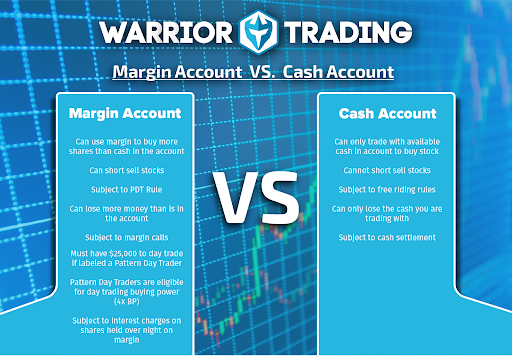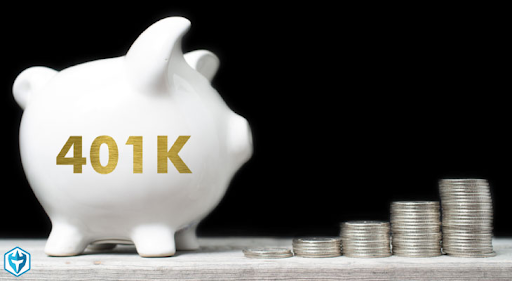- What Are Cash Accounts?
- What Are the Key Limitations of Cash Accounts?
- When Do Cash Accounts Make Sense?
- What Are Margin Accounts?
- What Are the Benefits of Margin Trading?
- What Are the Risks of Margin Trading?
- What Are Retirement Accounts?
- What Is the Different Between Traditional and Roth IRAs?
- What Are the Limitations on Retirement Accounts?
- What Is a Backdoor Roth Conversion?
- Account Types by Use Case: Which One Is Right for You?
- If You’re an Active Day Trader
- If You’re a Beginner Investor
- If You’re Focused on Retirement
- If You Have Less Than $25K
- What Are Other Brokerage Account Variants?
- How I Use My Accounts
- Closing Thoughts: Choose Smart and Keep Learning
When people ask me how to get started with trading, one of the first questions I ask back is, “What type of account are you opening?”Your brokerage account is more than a mere formality. In fact, it determines how often you can trade, whether you get instant settlement, how much leverage you can use, and even how your profits are taxed. I’ve traded with every account type over the years, and trust me, choosing the wrong setup can hold you back.
Let’s break down the three most common types of brokerage accounts: cash, margin, and retirement accounts.
What Are Cash Accounts?
A cash account is as simple as it sounds. You deposit money into the account, and that’s what you can trade with. No leverage, no borrowing, just your own funds.
What Are the Key Limitations of Cash Accounts?
The problem? Trades takes one business days to settle (T+1). That means if I buy and sell $25,000 worth of stock today, that buying power is locked up until the trade settles. So, unless you have a large balance, you’re limited to just a couple of trades per week.
When Do Cash Accounts Make Sense?
With a cash account, you could end up waiting for the perfect setup, only to be unable to trade it when your funds are tied up. For long-term investing, it might work. But for active trading, it’s not ideal.
What Are Margin Accounts?
I use a margin account for active day trading. It has two major benefits: instant settlement and leverage.
What Are the Benefits of Margin Trading?
The second I close a trade with a margin account, the buying power is back in my account. I can take another trade right away, which is crucial when I’m trading fast-moving setups back-to-back.
There’s also leverage. Most brokers offer 4:1 intraday margin and 2:1 overnight. That means if you deposit $25,000, you can trade with $100,000 during the day.
What Are the Risks of Margin Trading?
While this buying power can supercharge your strategy, it comes with risk. For example, if I take a $100,000 position and lose 50%, I’m not just down my original 25K. Now, I owe the broker money. It’s powerful, but you must respect it.
One thing to keep in mind is that, in the U.S., you need a minimum of $25,000 in a margin account to trade freely. That’s the Pattern Day Trader (PDT) rule. If you fall below that, you’re limited to three day trades within five business days.
What Are Retirement Accounts?
Last but not least, there are retirement accounts. You may already be familiar with these, but are you familiar with them in the context of trading?
Let’s see:
What Is the Different Between Traditional and Roth IRAs?
I use both traditional and Roth IRAs. These accounts come with major tax advantages. For example, a traditional IRA grows tax-deferred, which means I don’t pay taxes until I withdraw in retirement. A Roth IRA is even better: I pay taxes up front so that the growth and withdrawals are totally tax-free.
What Are the Limitations on Retirement Accounts?
That said, there are restrictions. I can’t touch the money before age 59.5 without penalties and taxes. Also, I can’t use margin or leverage in these accounts, which limits my strategy. Still, I use an IRA for long-term trades I want to let ride. It’s a great way to grow your wealth without the tax drag.
What Is a Backdoor Roth Conversion?
If you earn too much to contribute directly to a Roth, there’s a workaround called the backdoor Roth conversion. I deposit into a traditional IRA, then convert it and pay taxes on that conversion.
Account Types by Use Case: Which One Is Right for You?
Here’s how I think about account types based on the type of trader you are:
If You’re an Active Day Trader
A margin account with at least $25,000 is non-negotiable if you’re already a day trader. It gives you full flexibility to take multiple trades per day without worrying about settlement times or hitting PDT restrictions. It’s what I use, and it’s the only real option for anyone serious about trading.
If You’re a Beginner Investor
If you’re just starting out, a cash account can help you build discipline. You’ll trade with only the cash you have, which teaches you to manage risk and avoid overtrading. It’s how I started, and while it has its limitations, it’s a solid training ground.
If You’re Focused on Retirement
A Roth IRA is an incredible tool if you’re dead-set on retirement. If you’re eligible, take advantage of the tax-free growth and withdrawals. It’s perfect for long-term strategies that are less concerned about frequent trades and more focused on compounding gains.
If You Have Less Than $25K
Finally, if you have less than $25,000, you can still open a margin account — just know the restrictions. For instance, you’ll be subject to the PDT rule, which limits you to three day trades in a rolling five-day period. You’ll also have to pick your spots carefully and avoid overtrading.
What Are Other Brokerage Account Variants?
Here are a few more account types you might run into:
- Joint Accounts: These are shared between spouses or family members. They offer flexibility in managing shared investments and can simplify estate planning.
- Custodial Accounts: These are set up for minors. They allow a parent or guardian to invest on behalf of a child until they reach adulthood.
- Corporate or Business Accounts: If you’re trading under an LLC or corporation, these accounts are ideal. They’re for traders who want to keep their personal and professional finances separate.
- Trust or Estate Accounts: These accounts are typically used for wealth management or inheritance planning. They provide control over asset distribution and can include specific conditions for beneficiaries.
Each account type comes with unique rules, tax treatments, and responsibilities. It’s worth doing some digging so that you select the right account for your needs.
How I Use My Accounts
Me? I keep things straightforward. My margin account is where all my day trading happens — it gives me the speed, buying power, and instant access I need to stay in the zone. I’m usually in and out of trades quickly, so flexibility is non-negotiable.
I also have an IRA for longer-term trades that I don’t plan to touch anytime soon. It’s where I let ideas play out slowly and grow tax-advantaged.
As for cash accounts, I used them early on when I was first learning how to trade, but nowadays, they don’t fit my style. Still, they’re a solid option for anyone easing into the trading world.
Closing Thoughts: Choose Smart and Keep Learning
Your account type isn’t just a technical detail. Rather, it shapes how you trade, how fast you move, and how much you can grow. The wrong setup can limit your opportunities, while the right one can help you build consistency, discipline, and long-term success.
If you’re just getting started, pick the account that matches your goals and risk tolerance. Remember to begin in a simulator first before putting real money on the line, and when ready, start with small share size when moving to a real account. And if you’re still figuring things out, stick around! I’ll show you how to build your trading setup from the ground up, one trade at a time.
Ready to level up your trading knowledge? Subscribe to the Warrior Trading YouTube channel for trade breakdowns, strategy lessons, and behind-the-scenes looks at my own trading sessions. Let’s learn together.




